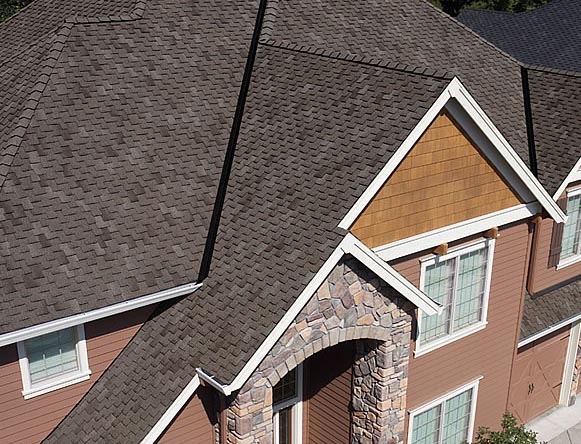Finest Practices for Ensuring Proper Roofing Ventilation
A well balanced intake and exhaust vent proportion, generally 1:300, plays a critical duty, with consumption vents ideally put at the lower edge of the roofing for trendy air entrance and exhaust vents at the top for cozy air leave. Keeping insulation away from vents is vital to stop air flow restriction.
Understand Air Flow Fundamentals
Correctly comprehending air flow basics is vital for making certain the longevity and performance of roof. Effective ventilation reduces moisture build-up and temperature level extremes in the attic, both of which can bring about substantial structural damage with time. A well-ventilated roofing system assists in stopping typical problems such as mold growth, wood rot, and ice dams, which can endanger the integrity of the roof products and the underlying frameworks.
The primary objective of air flow is to facilitate the activity of air, enabling a constant exchange in between the outside and indoor atmospheres. This balance is attained through a mix of consumption and exhaust vents that function with each other to keep ideal airflow. Intake vents, usually situated along the eaves or soffits, enable fresh air to enter the attic room area, while exhaust vents, typically located at or near the roofing system ridge, allow hot, moist air to leave.
Trick variables influencing the efficiency of roof covering air flow include correct positioning, sufficient sizing, and making sure that both intake and exhaust vents are unhampered. Regular evaluation and maintenance are crucial to determine possible blockages, damage, or inadequacies in the ventilation system, consequently guarding the roofing system's performance and toughness.
Types of Roof Vents
Roof vents play a crucial role in keeping efficient attic room ventilation and, by extension, the overall wellness of the roof system. Numerous kinds of roof covering vents are available, each with unique advantages tailored to specific roofing needs.

Soffit vents are set up under the eaves and job in tandem with roof covering vents to make sure a well balanced consumption and exhaust system. By permitting cooler air to go into from below, soffit vents assist in the expulsion of hot air via top vents. Gable vents, located on the exterior wall surfaces of the attic, offer another reliable solution, especially in homes with gable roofs.
Evaluate Your Current Ventilation

Next, consider the age and condition of your roof covering products and air flow parts. Older systems might not adhere to present building codes or might have degraded gradually, decreasing their performance. Conduct a comprehensive evaluation to determine any signs of damage, such as rust, damages, or gaps that can compromise the system's efficiency.
Furthermore, determine the attic temperature and humidity levels. High temperatures and humidity can suggest poor air flow.
Setup Best Practices
Efficient installation of roof covering ventilation systems is extremely important for making certain ideal performance and durability. Correct installation begins with comprehending the certain ventilation needs of the building and the roof covering it covers. This involves determining the correct ratio of consumption to tire vents, generally sticking to the 1:300 policy, which specifies one square foot of ventilation for every single 300 square feet of attic flooring room.

The positioning of vents is just as critical. Intake vents should be installed at the roofing Your Domain Name system's reduced edge, commonly in the soffits, to permit trendy air to go into. Exhaust vents, on the various other hand, must be installed near or at the roof covering's top to assist in the exit of cozy, damp air. This develops an all-natural air movement that helps maintain temperature level and moisture equilibrium within the attic space.
Seal all visit this website vent links thoroughly to avoid air leaks and prospective water infiltration. Use high-quality products and adhere to maker standards to make certain durability and performance. Additionally, integrating ridge vents with baffles can dramatically improve airflow performance by protecting against wind-driven rainfall and snow from entering the attic room.
Eventually, specific installation of roof ventilation systems alleviates possible issues such as mold growth, ice dams, and architectural damages, guaranteeing the roofing system's honesty and the structure's overall health.
Regular Maintenance Tips
Consistency in maintenance practices is basic to making certain the long-lasting effectiveness of roof ventilation systems. Throughout these inspections, ensure that vents are complimentary of debris, nests, and other obstructions that could impede air flow.
Use a soft brush or a vacuum to eliminate dust and debris from intake and exhaust vents. Be mindful not to damage the vent displays or louvers throughout the process.
Appropriate insulation is equally essential. Make sure that attic room insulation does not obstruct the vents, as this can significantly restrict air flow. Rearrange or change it to preserve an effective barrier. if any type of insulation has moved or settled.
Last but not least, replace any type of damaged or missing components promptly. Broken vents, fractured tiles, or tatty flashing can all add to poor air flow and ought to be dealt with right away. Regular upkeep makes certain that the roof air flow system functions efficiently, thereby extending the life-span of the roof covering itself.
Verdict
Guaranteeing proper roofing air flow is paramount for maintaining the efficiency and read more durability of a roof. Adherence to the 1:300 consumption and exhaust air vent proportion, combined with the strategic positioning of vents, is vital. Normal biannual examinations, debris cleaning, and guaranteeing insulation does not obstruct air movement are important techniques. Carrying out these finest techniques will cultivate a well-ventilated roof covering system, thus alleviating possible problems connected to moisture accumulation and too much heat, eventually prolonging the roof's life-span.
A balanced intake and exhaust vent ratio, commonly 1:300, plays a critical role, with consumption vents ideally placed at the lower edge of the roof for amazing air entry and exhaust vents at the optimal for cozy air exit. Intake vents, commonly located along the eaves or soffits, permit fresh air to enter the attic room, while exhaust vents, often positioned at or near the roof ridge, make it possible for hot, damp air to run away.
Soffit vents are installed under the eaves and job in tandem with roofing vents to make sure a well balanced consumption and exhaust system. By allowing cooler air to go into from below, soffit vents facilitate the expulsion of hot air through upper vents. Adherence to the 1:300 consumption and exhaust air vent ratio, combined with the calculated placement of vents, is necessary.